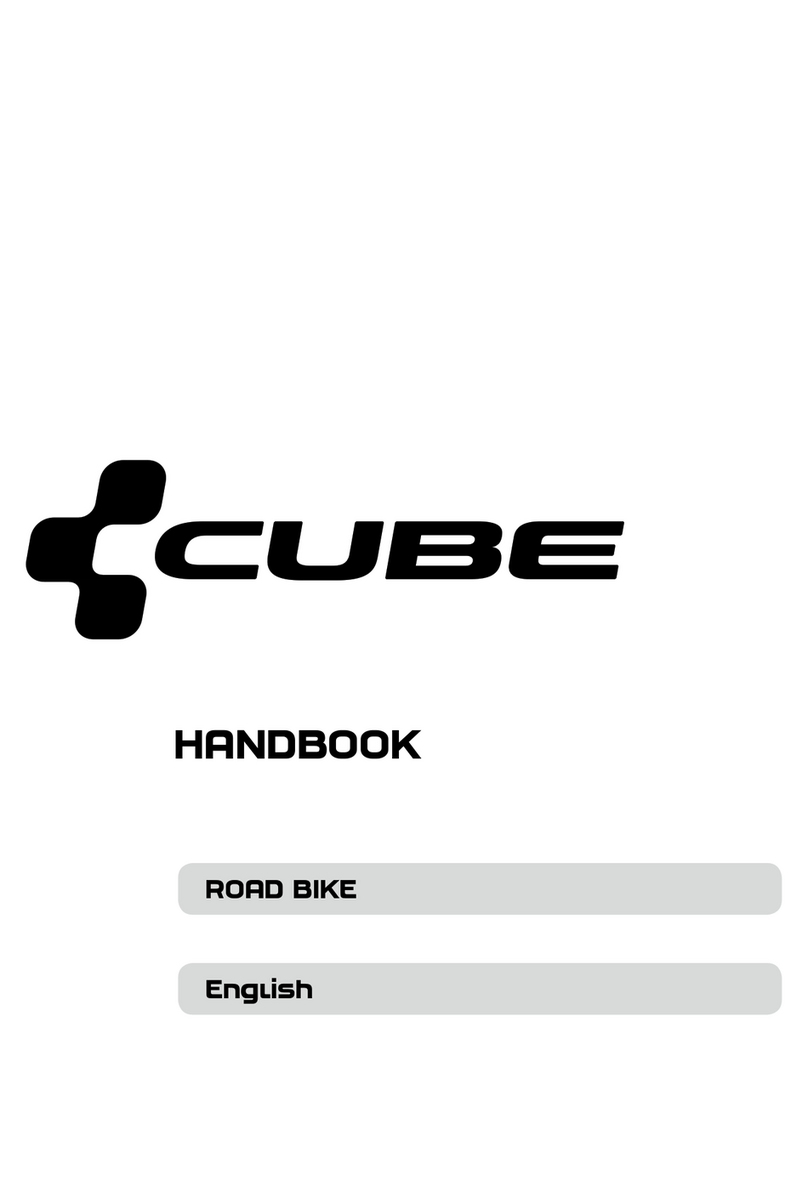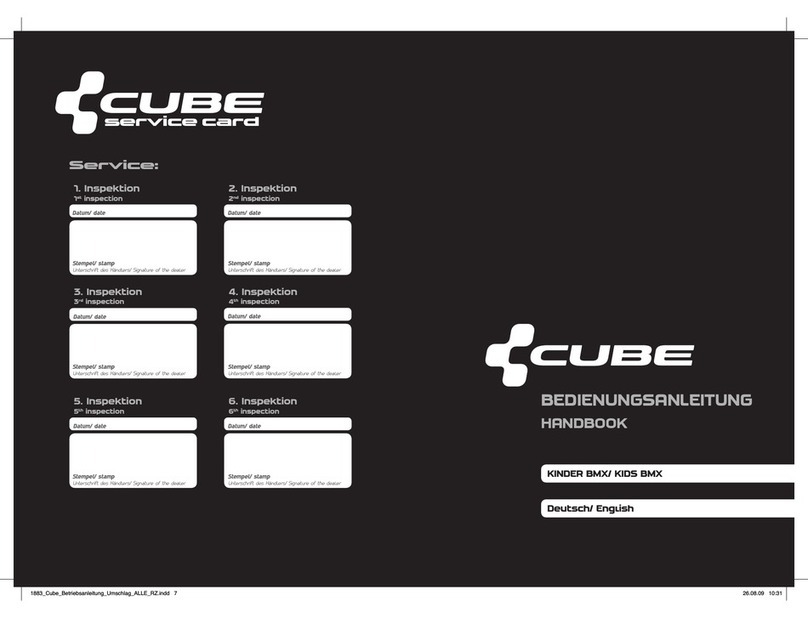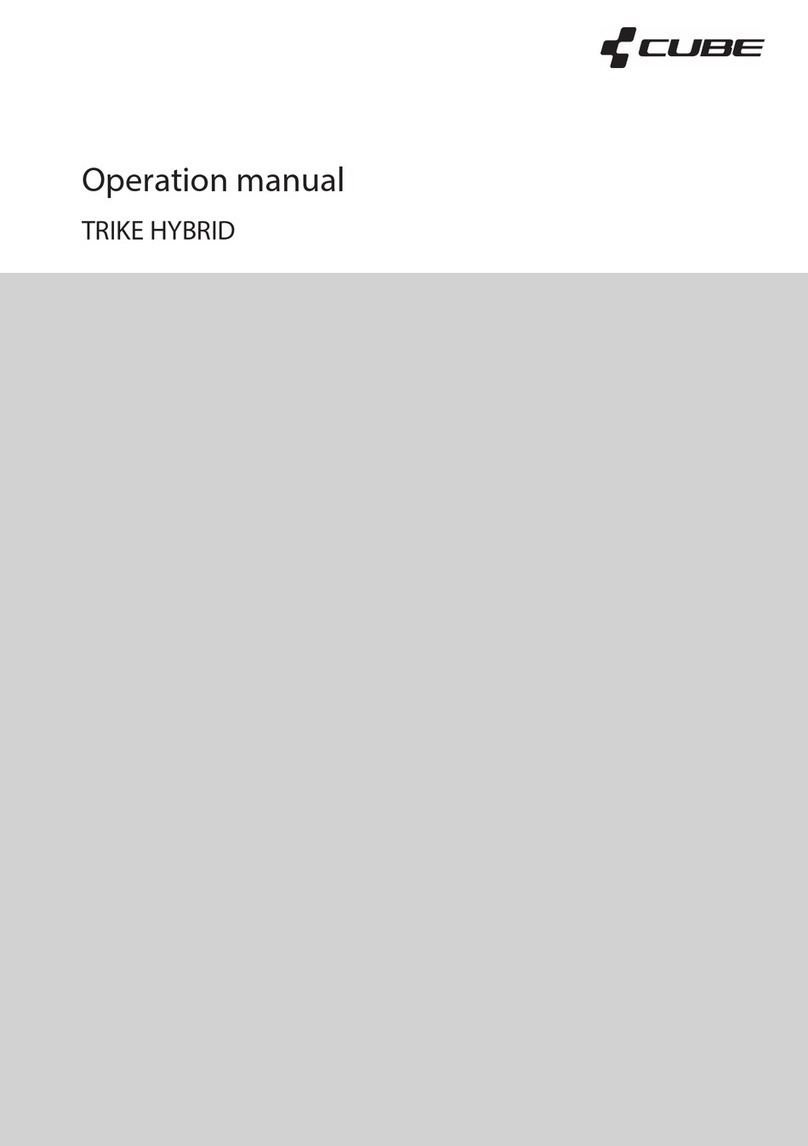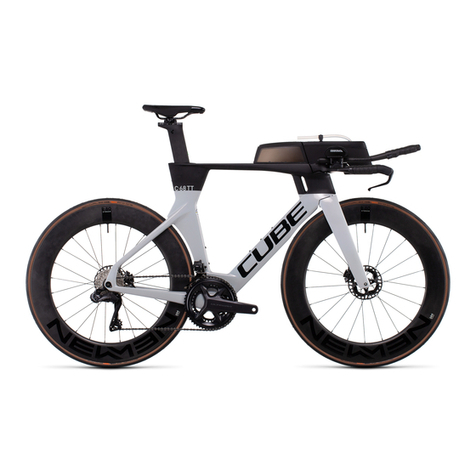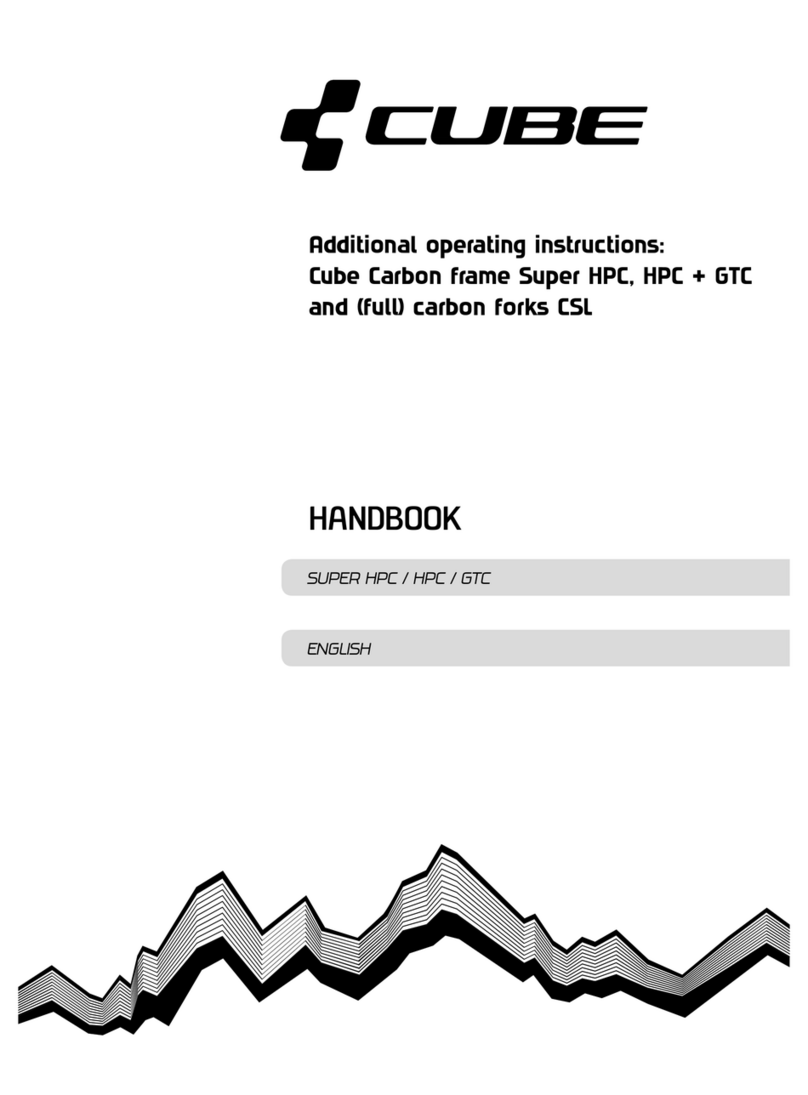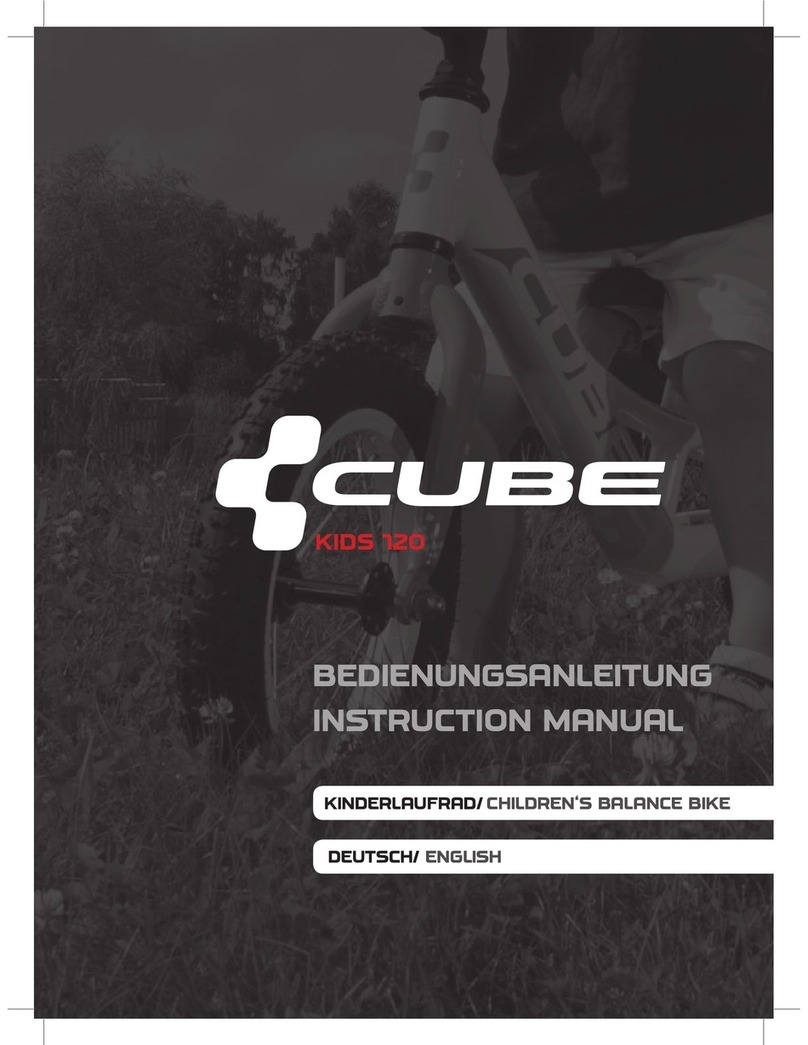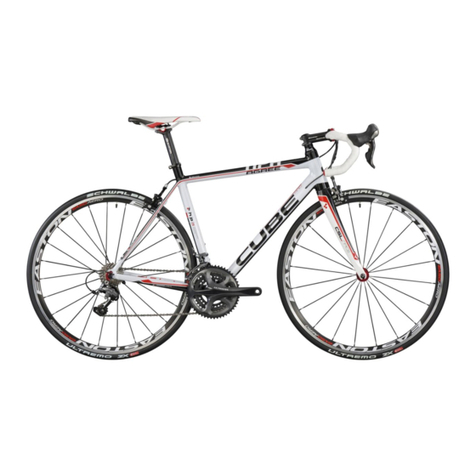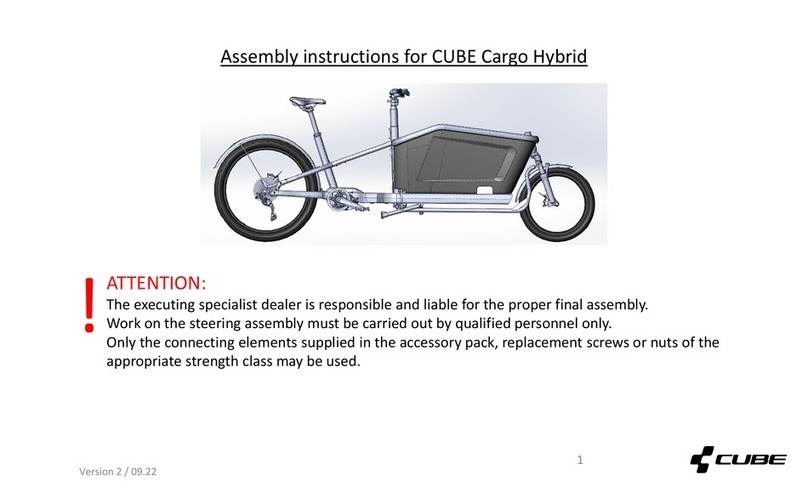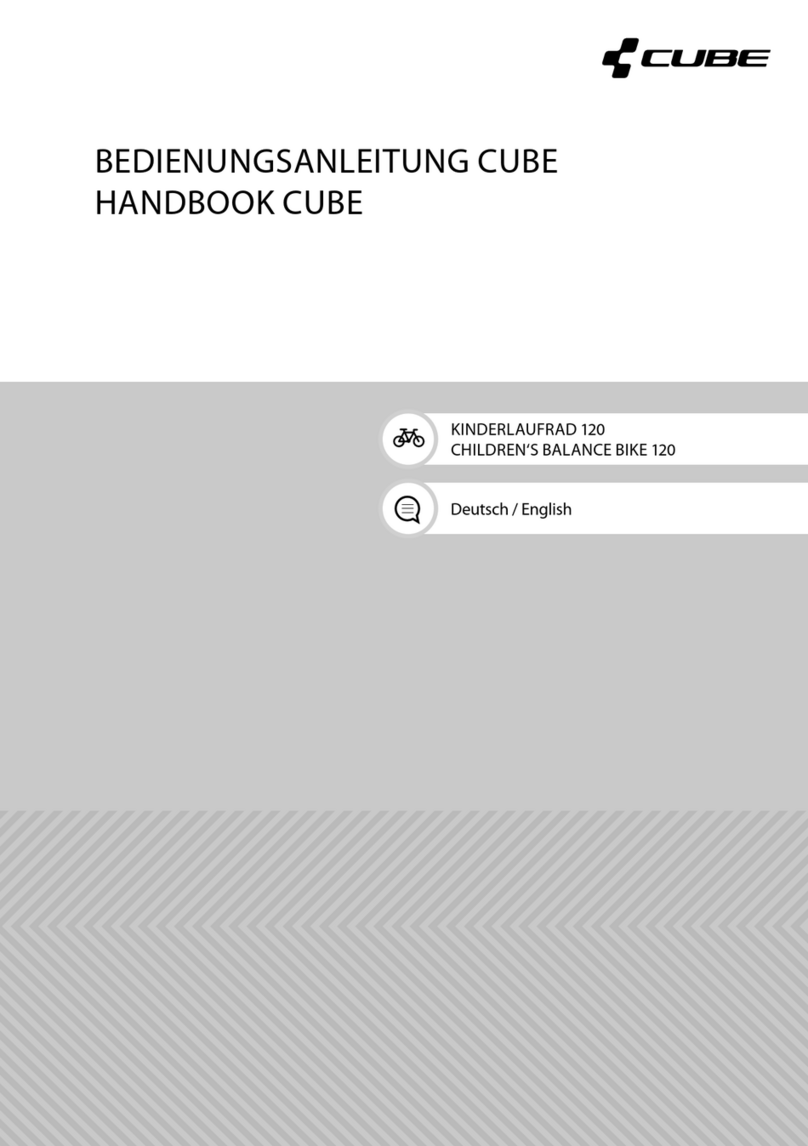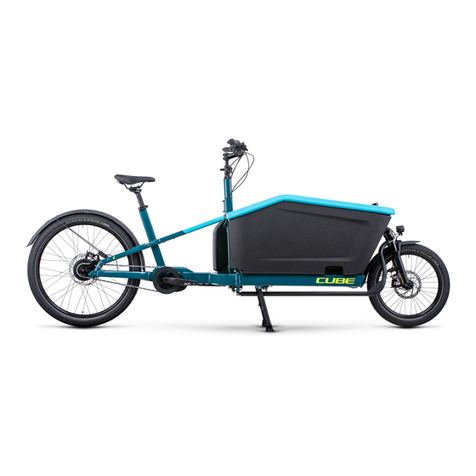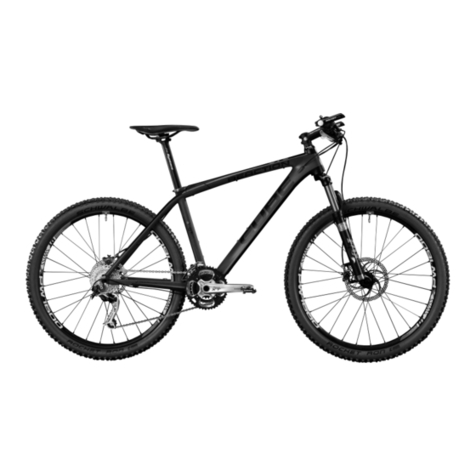Content
1 About this Owner’sManual ............... 07
1.1 Conventions .......................................................... 07
1.1.1 Symbol.................................................................... 07
1.1.2 Location indications ........................................... 07
1.1.3 List of abbreviations............................................ 07
1.1.4 Denition of Terms ....................................... 07-08
1.2 Owner’s Manual ............................................. 08-09
1.2.1 Scope of Application ......................................... 09
1.2.2 Accompanying documentation ...................... 09
1.2.3 Pictures ................................................................... 09
2 For your safety .....................................09
2.1 Use your bicycle as intended ............................09
2.1.1 Who may use your bicycle? ............................... 10
2.1.2 How may you ride your bicycle? ...................... 10
2.1.3 Where may you ride your bicycle? .............10-11
2.1.4 In what condition must your bike be
when you ride it? .................................................. 11
2.1.5 Accessories and modication ......................11-12
2.1.6 Transport of children, baggage,
bicycle trailers ........................................................12
2.1.7 Roller training ........................................................13
2.2 Other hazards ....................................................... 13
2.2.1 Hazards caused by faulty
nal assembly ...................................................... 13
2.2.2 Hazards caused by improper use .................... 13
2.2.3 Risk of burns .......................................................... 13
2.2.4 Other hazards and safety notes ................. 13-14
2.3 Disposal .................................................................. 14
3 Included with your bike and
Technical Details ..................................14
3.1 Scorpe of supply ...................................................14
3.2 Technical data ....................................................... 14
3.3 Torques of screw connections ......................... 15
4 Assembly and function ....................... 15
4.1 Categories .............................................................. 15
4.2 Mountain bike .......................................................16
4.2.1 Fully ..........................................................................16
4.2.2 Hardtails ..................................................................16
4.3 Crossbike .................................................................16
4.4 Racing bike / Triathlon ........................................ 17
4.5 Cyclo-cross ..............................................................17
4.6 Fitness bikes / Urban bikes ................................ 17
4.7 Trekking bike ......................................................... 18
4.8 General information ............................................18
4.8.1 Brakes .......................................................................18
4.8.2 Gear shift .................................................................18
4.8.3 Frame and fork ......................................................18
4.9 Frame material / information
on carbon material ...............................................19
4.9.1 Information on the frame construction ........ 19
4.9.2 How to use your carbon
parts correctly ..................................................19-20
5 Bicycle frame/
Bicycle frame set ................................. 20
6 Before using for the rst time ............ 21
7 Before every trip ............................ 21-22
7.1 Check the road wheels ...................................... 22
7.1.1 Check tting ......................................................... 23
7.1.2 Check the rims ...................................................... 23
7.1.3 Check tyres ...................................................... 24-25
7.1.4 Other checks ......................................................... 25
7.2 Check saddle and seat post .............................. 26
7.3 Handlebars, check stem ................................ 26-27
7.4 Check handlebar-mounted parts ................... 27
7.5 Check the fork bearing ................................. 27-28
7.6 Check suspension fork ...................................... 28
7.7 Check the rear wheel suspension ................... 28
7.8 Check the brakes ............................................ 28-29
7.8.1 Check rim brakes and cable
(racing bike version) ......................................29-30
7.8.2 Check rim brakes and cable
(mountain bike version) ..................................... 30
7.8.3 Check hydraulic rim brakes ............................... 31
7.8.4 Check hydraulic disc brake .......................... 31-32
7.8.5 Check back-pedal brake .....................................32
